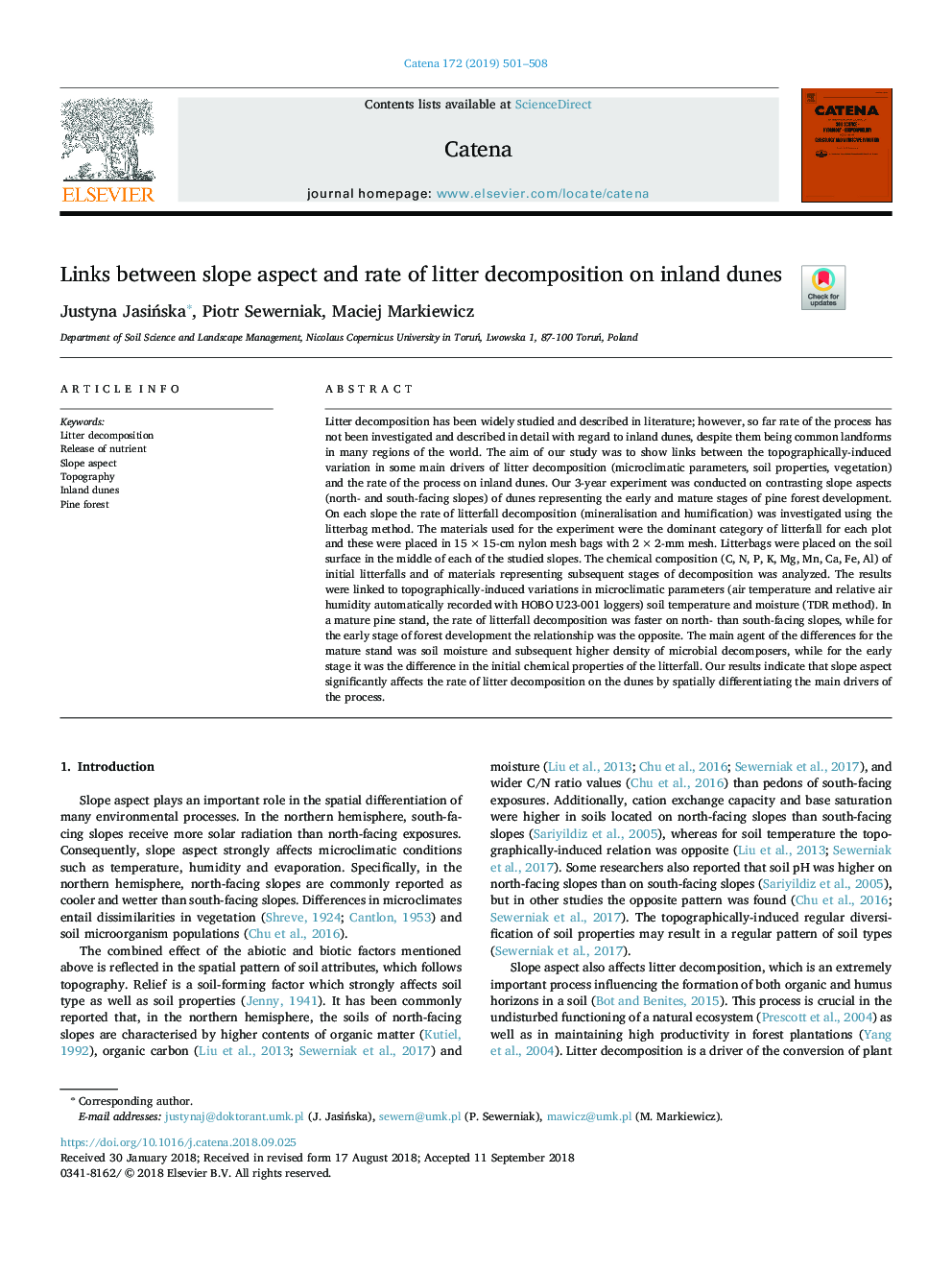| Article ID | Journal | Published Year | Pages | File Type |
|---|---|---|---|---|
| 10118204 | CATENA | 2019 | 8 Pages |
Abstract
Litter decomposition has been widely studied and described in literature; however, so far rate of the process has not been investigated and described in detail with regard to inland dunes, despite them being common landforms in many regions of the world. The aim of our study was to show links between the topographically-induced variation in some main drivers of litter decomposition (microclimatic parameters, soil properties, vegetation) and the rate of the process on inland dunes. Our 3-year experiment was conducted on contrasting slope aspects (north- and south-facing slopes) of dunes representing the early and mature stages of pine forest development. On each slope the rate of litterfall decomposition (mineralisation and humification) was investigated using the litterbag method. The materials used for the experiment were the dominant category of litterfall for each plot and these were placed in 15â¯Ãâ¯15-cm nylon mesh bags with 2â¯Ãâ¯2-mm mesh. Litterbags were placed on the soil surface in the middle of each of the studied slopes. The chemical composition (C, N, P, K, Mg, Mn, Ca, Fe, Al) of initial litterfalls and of materials representing subsequent stages of decomposition was analyzed. The results were linked to topographically-induced variations in microclimatic parameters (air temperature and relative air humidity automatically recorded with HOBO U23-001 loggers) soil temperature and moisture (TDR method). In a mature pine stand, the rate of litterfall decomposition was faster on north- than south-facing slopes, while for the early stage of forest development the relationship was the opposite. The main agent of the differences for the mature stand was soil moisture and subsequent higher density of microbial decomposers, while for the early stage it was the difference in the initial chemical properties of the litterfall. Our results indicate that slope aspect significantly affects the rate of litter decomposition on the dunes by spatially differentiating the main drivers of the process.
Related Topics
Physical Sciences and Engineering
Earth and Planetary Sciences
Earth-Surface Processes
Authors
Justyna JasiÅska, Piotr Sewerniak, Maciej Markiewicz,
